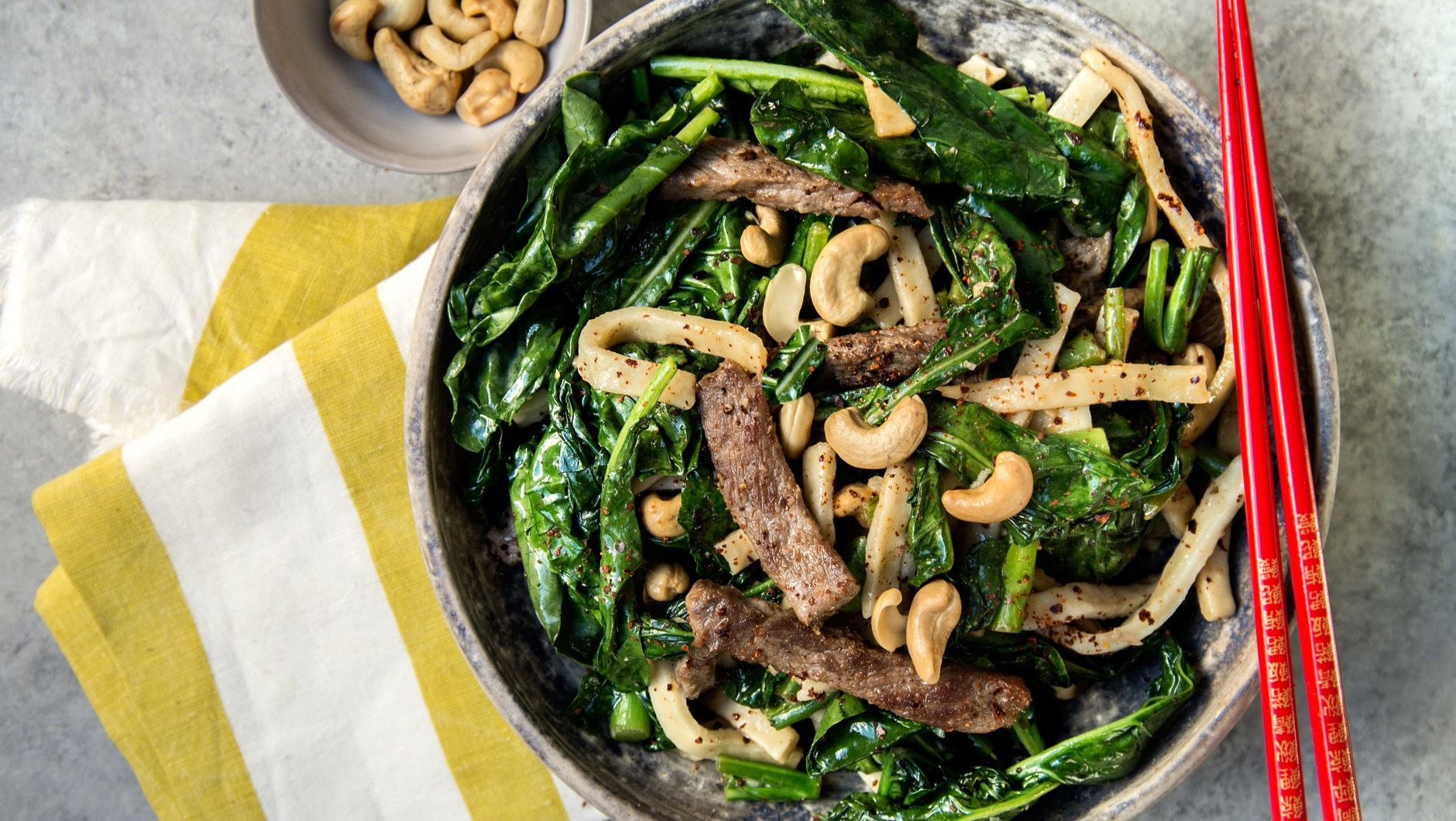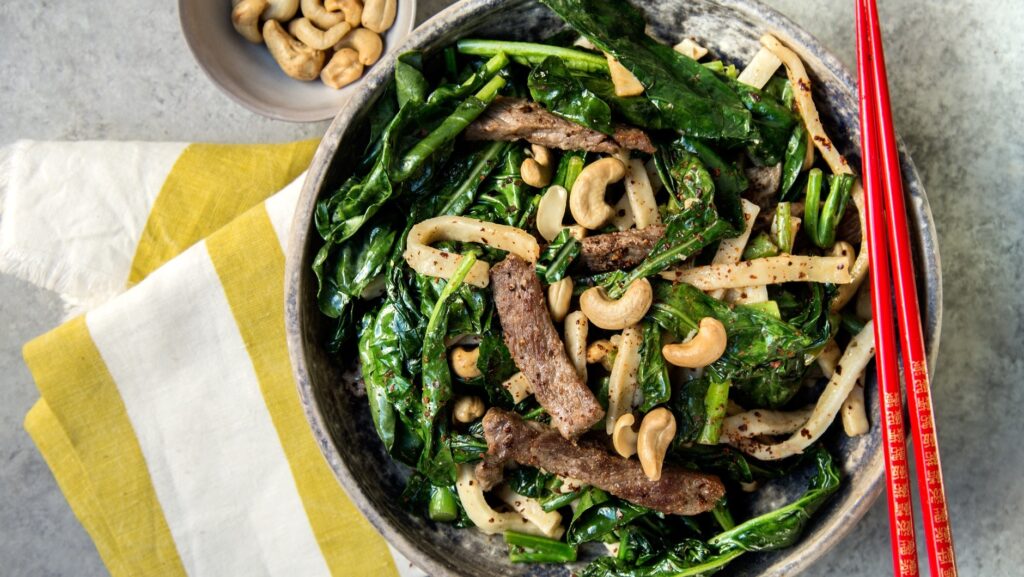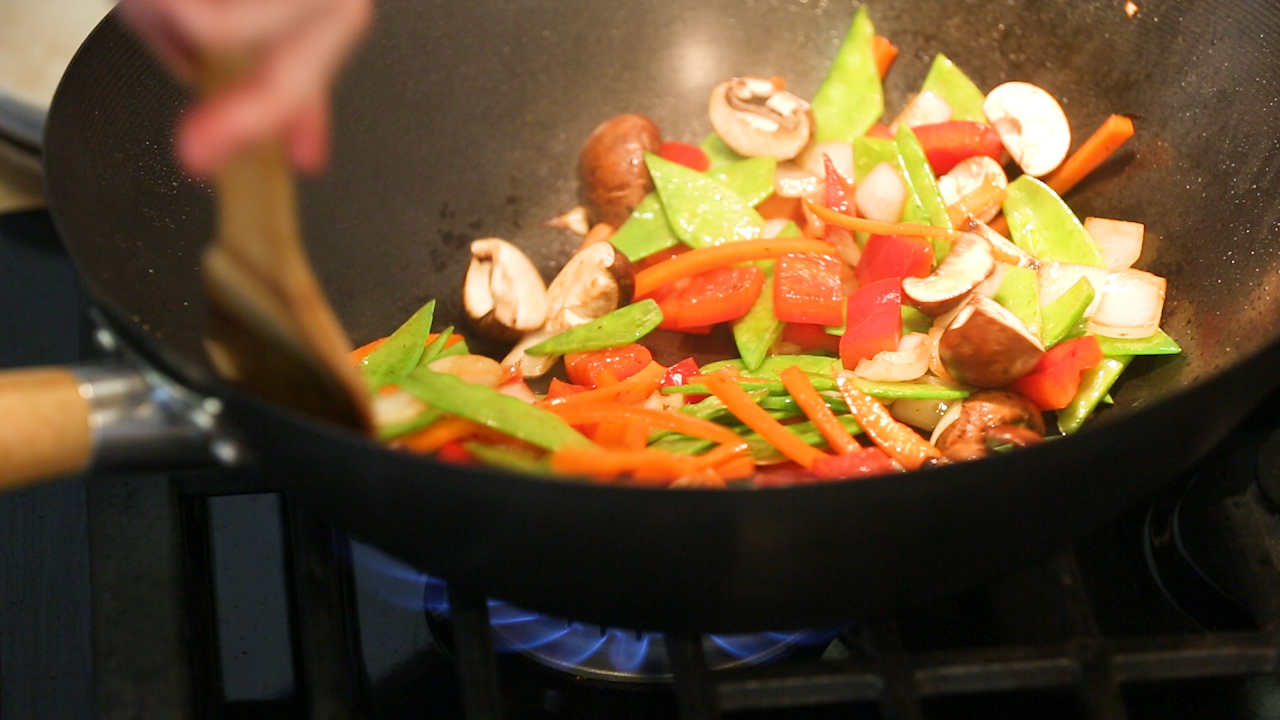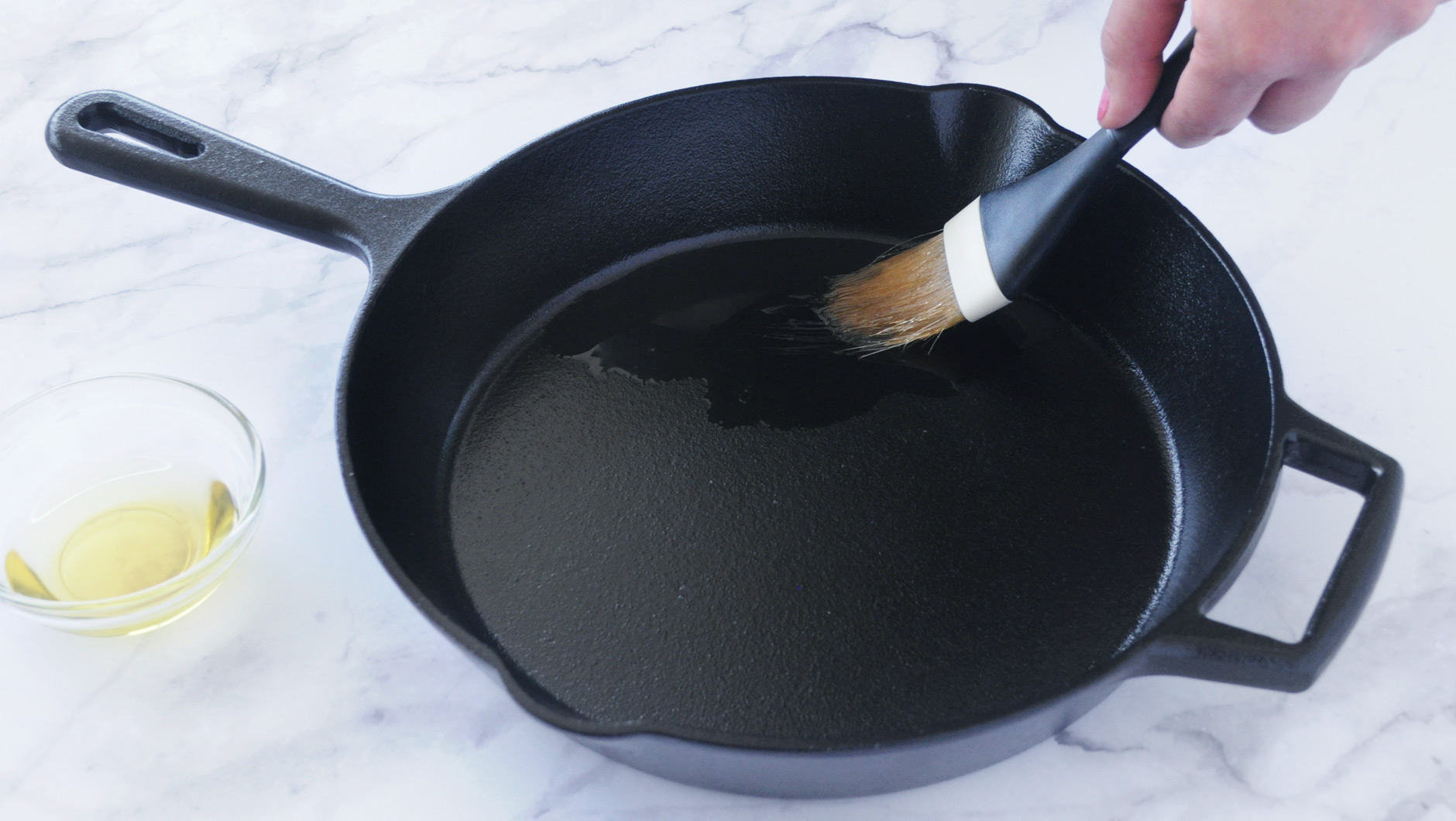Woks aren’t just handy for re-creating your favorite Asian dish, they’re also a useful kitchen tool for getting the most flavor out of any meal. Before cooking with a wok, there are some important things to know.

Seasoning Your Wok
The first rule of thumb for cast iron woks is that they need to be seasoned and properly cared for.
How to Season a Wok:
- Hand-wash your cast iron wok with mild dish soap and water. Scrub off any soot.
- Rinse off all the soap and dry thoroughly immediately after washing.
- Coat the inside and outside with vegetable oil, using a paper towel. You can toss the wok in an oven at 350°F for 15 minutes. If your wok has wooden handles or isn’t completely cast iron, don’t oil the outside.
- Heat your cast iron on a stovetop over medium heat until the entire pan is hot throughout.
- Remove the wok from the heat after the allotted time and allow it to cool at room temperature. Oil the outside lightly once the pan is cool enough to handle. You’ll notice that the oil soaks into the iron, which is a sign that your pan is seasoned and ready to cook with.
Maintenance Tip: Keep your cast iron dry and lightly coated with oil when not in use. Water will make it rust; oil helps keep the pan seasoned.
How to Use a Wok
Cooking with a wok is traditionally done over a gas flame. If you don’t have access to a gas stove, don’t worry. What really matters is getting the pan to the right temperature and keeping it there. There are three ways to use a wok:
1. Searing
Woks are cooked on medium-high to high heat when stir-frying and should be just about smoking hot. This sears the food so it cooks quickly.
At restaurants, chefs use powerful flames and constantly toss the food around so the food doesn’t burn; but you may find using a spoon or spatula to toss the food works better at home.
Tip: Don’t toss your food too much. Make sure the food stays on the pan long enough so the vegetables don’t come out watery and the protein doesn’t miss that flavorful sear.
2. Deep-frying
Along with stir-fry, woks can be used for deep-frying. To deep-fry with a wok, you’ll need a wok strainer so you can fish out golden fried goodies from the oil with ease.
3. Steaming
If you plan on steaming with a wok, you should use a traditional bamboo steamer. Set it over an inch or two of water inside the wok and steam away.
What to Cook in a Wok
Here are some ideas to get you started at home. Mix and match to experiment with your favorite flavors:
- Oils: Consider flavored oils like chili-infused or garlic-infused. Other oils worth exploring are sesame and aromatic nut oils like extra-virgin coconut. Check out our Cooking Oil Guide for more inspiration.
- Proteins: Seafood, chicken, beef, pork and tofu are all wonderful wok cooking choices. Just make sure you use a good cut (approximately 1 inch) for quick, high-heat cooking. Also consider tossing in healthy additions like edamame, peanuts or tree nuts, like almonds and cashews.
- Veggies: Traditional Asian vegetables are well-suited, but as long as it can be sautéed, anything goes. Again, make sure you’ve cut them to a consistent size so everything cooks evenly. This helps you avoid the trap of soggy, limp veggies and gives you veggies that are crisp and bright. Our Portobello Mushroom and Broccoli recipe is a great way to try this.
- Go-to veggies: green beans, mushrooms, broccoli, bok choy and bell pepper
- Non-traditional options: Swiss chard, kale, corn kernels, plum tomatoes and okra
- Aromatics: These additions help create aroma and flavor. Try adding leeks, garlic or onions, either diced or minced. Other great options are chili peppers, Szechuan peppercorn, orange peel, ginger, basil and cilantro.
- Sauces: Add sauces at the end so they coat the other ingredients and don’t burn before everything is cooked through. Try adding hoisin, black bean, soy sauce or plum sauce to your wok and stir to coat.






